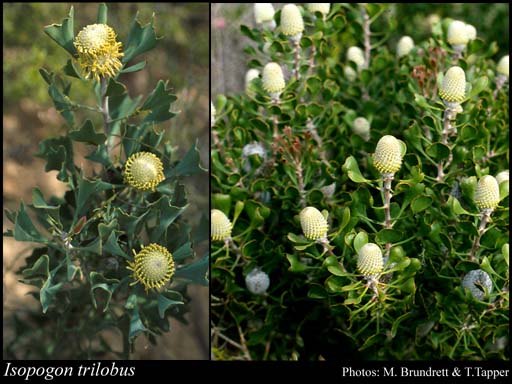- Reference
- Trans.Linn.Soc.London 10:72 (1810)
- Conservation Code
- Not threatened
- Naturalised Status
- Native to Western Australia
- Name Status
- Current
Upright, non-lignotuberous shrub, 0.3-2 m high. Fl. yellow/cream-yellow, Sep to Dec or Jan. White, grey or brown sand, sand & laterite. Sandplains, sand dunes, coastal rocky areas.







Scientific Description
Shrubs, 1-2.5 m high, with straight hairs. Leaves alternate, 40-70 mm long, glabrous; lamina flat, once divided or twice or more divided, pinnately divided, tripartitely divided or divided only at the apex, shallowly divided or deeply divided, with 3-5 points or lobes; distance from base of leaf to lowest lobe 20-30 mm. Inflorescences not viscid, cream or yellow. Perianth 10-12 mm long, hairy, the limb apex hairy all over; pistil 10-13 mm long; pollen presenter fusiform, hairy, 3-5 mm long. Cone with deciduous scales, 26-28 mm long. Flowers in January, September, October, November or December. Occurs in the Eremaean (ER) or South-west (SW) Botanical Province(s), in the Coolgardie (COO), Avon Wheatbelt (AW), Jarrah Forest (JF), Mallee (MAL) or Esperance Plains (ESP) IBRA subregion(s).
Distribution
- IBRA Regions
- Avon Wheatbelt, Coolgardie, Esperance Plains, Jarrah Forest, Mallee.
- IBRA Subregions
- Eastern Mallee, Fitzgerald, Katanning, Mardabilla, Recherche, Southern Jarrah Forest, Western Mallee.
- Local Government Areas (LGAs)
- Albany, Broomehill-Tambellup, Cranbrook, Dundas, Esperance, Gnowangerup, Jerramungup, Kent, Plantagenet, Ravensthorpe.